#silvopasture
Explore tagged Tumblr posts
Text
Permaculture Methods
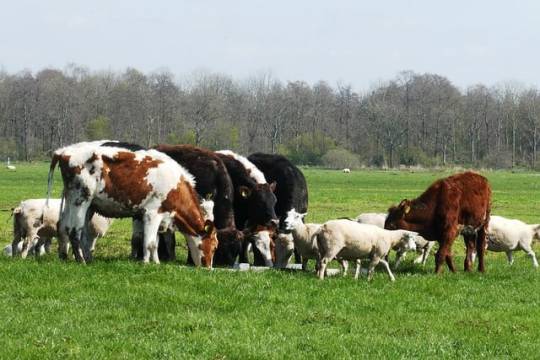

Mixed Grazing: grazing a flock of multiple species together in Pasture, such as cattle, sheep and goats. Each species has different dietary needs and are able to graze on different plants in the Pasture keeping weeds down and using acreage more efficiently. Cattle prefer grass, sheep prefer weeds, while goats like brush and forage. The animals also graze at different levels, cattle tall, sheep short, and goats climbing. A mixed flock is also healthier because each species has its own unique parasites that will not spread to members of a different species.


Silvopastoralism: grazing Livestock in Orchards and vineyards. The animals keep the grass and weeds down in the Orchards which helps keep the trees healthy. They fertilize the Orchards with their manure. Of course, as with most types of integrated farming it really helps save space for the smaller farmer or homesteaders.


Integrated rice farming is done is Asia, using a variety of animals to help benefit the production of rice. The most common being rice-duck-fish farming, where fish are farming in channels around the rice field and ducks are released into the paddies. The fish and ducks fertilize the rice and keep pests at bay, especially mosquito larvae which can easily run rampant in a swampy rice field. The ducks and fish naturally replace the need for chemical fertilizers and pesticides.
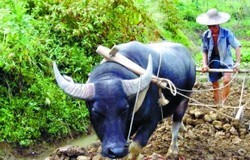
As a bonus: a lot of rice farmers use the water buffalo to plough the field, this animal is naturally at home in the swampy environment of the rice paddy. Aside from ploughing, the water buffalo is also used as a source of milk, meat and hide.


Intercropping/Companion Planting: planting different species of crops together that will have beneficial effects to each other. The most ancient intercropping is growing cereals and pulses (legumes) together, as the legumes provide lots of nitrogen that helps the grains grow. The Three Sisters is variation of this, combining maize (grain) with beans (legume) but also incorporating squash into the mix which help keeps weeds and pests like raccoons at bay with their sprawling prickly leaves. This system will work interchangeably with any grain, pulse or Marrow (the Marrows are squash, gourds, melons and Cucumbers).
Some other combinations we like to use are Root veg + Leafy green. We intercrop carrots with spinach (and beets with lettuce), the crops don't compete with another for space as one crop mainly grows up and the other grows down, the leafy greens also shade the root rows and help keep weeds down.
I think everyone's heard of the Tomato + Basil intercropping, and how the basil keeps tomato pests at bay and help flavour the tomatoes. We use this system with other nightshades (Eggplant and Peppers) as well, basil is a herb in the Mint family so we substitute basil for other herbs too (summer savory, marjoram).
20 notes
·
View notes
Text









Photos by Marc Rovellada Ballesteros published in La Mira and Happyxais.
Daniel is a shepherd who has been hired by the City Council of El Bruc (a town in Central Catalonia) to graze in the natural areas between the area's towns. Like other shepherds who work in the traditional way, he practises transhumance (seasonal nomadism to take the animals to the best pastures), and when the herd comes to El Bruc their grazing is this job. In modern times, this job is usually done by the municipal brigade with chainsaws and string trimmers, but Daniel's herd can do it just as well. It consists of 150 sheep, 130 goats, 4 dogs and 1 donkey, as well as the shepherd himself. Grazing in this area, they keep the vegetation to a controlled level, making it safer and reducing the chances of a wildfire.
Shepherding and grazing have been used in this way for millennia, uninterruptedly in many places, and now a few urban areas like El Bruc are joining again in what is being called "silvopasture". Grazing in urban areas is more demanding for the shepherd, because he has to be careful with cars, domestic animals, and neighbours, but in the end it is a mutually-beneficial arrangement.
Daniel shares snippets of his job in his Instagram account Happyxais.savall.
#el bruc#catalunya#silvopasture#sheep#goats#shepherd#animals#transhumance#sustainability#eco friendly#cottagecore#ruralcore#earth#pasture#ethnography#photojournalism#people of the world#culture
38 notes
·
View notes
Text
Silvopasture gives cows choice in where to be and what to eat, which Karolini Tenffen de Sousa, a postdoctoral fellow at Instituto de Zootecnia in Brazil who specializes in cattle behavior, says can improve their health. Cows can be in the shade when they want, drink water when they want, and graze when they want. “If they don’t experience stress their physiology will be good,” she said. According to a 2017 study from the Center for Agroforestry at the University of Missouri, silvopasture can also extend the grazing season, so that it starts earlier in spring and lasts longer in fall compared to open pasture. Forage also grows better in silvopastures during the hottest times of the summer compared to open pasture, the study found. “The silvopastures are gold during droughts,” Chedzoy said. “The plants don’t wither and burn up like they do in the shadeless pastures.” Chedzoy says the cows’ diet of grass, forage and hay that he harvests in the summer means he doesn’t need to supplement his feed with protein meal or additional roughage the way many farmers do. And having the cows spread out across the forest all year long – instead of being stuck in a barn during the winter – means their waste doesn’t pollute the local watershed. And silvopasture allows for many layers of biodiversity compared to grasslands. They support a wider variety of bird species, more pollinators, bigger and more diverse mammals, and a much wider variety of plant life with more varied root systems. But it also requires careful management and daily rotation, as livestock can damage trees by trampling roots. This wear and tear can go unnoticed for years, and once the damage is visible, it can be too late to save those valuable trees. While research is still in early stages, Project Drawdown, a leading organization promoting climate solutions, has heralded silvopasture as an agricultural solution to the climate crisis due to hopes it can increase carbon sequestration through plants pulling carbon from the atmosphere through photosynthesis, sinking it into soils, and holding it in their own biomass. Alix Contosta, a research assistant professor at University of New Hampshire who focuses on the relationship between land use and climate, says that her research has shown that carbon and nitrous oxide emissions were lower in silvopastures compared to areas that were clear cut or in treeless pasture, meaning cattle on silvopasture has lower emissions. In addition, most silvopastures, like Chedzoy’s, don’t require emissions-intensive fertilizers or feed that has to be grown and shipped to the farm, further reducing the impact on the climate.
190 notes
·
View notes
Text

Riparian Restoration at New Bolton - November 19th 2023
6 notes
·
View notes
Text
0 notes
Text
0 notes
Text
Grow Billion Trees-sustainable agriculture
Discover the challenges and opportunities in silvopasture systems for sustainable agriculture.
0 notes
Text
0 notes
Text
Shade, Shelter, and Sustainability: The Beauty of Silvopasture
Discover the harmonious world of Silvopasture, where trees and livestock coexist. This sustainable farming practice offers shade and shelter to animals while nurturing a healthier environment.
Silvopasture isn't just about farming; it's a vision of balance and resilience. It reduces heat stress on animals, enriches the soil, and supports biodiversity.
Explore the wonders of Silvopasture and how it transforms agriculture for the better.
Embrace a future where sustainability and farming thrive together.
0 notes
Note
YES YES YES THANK YOU
@reasonsforhope
Lately I've been reading "Drawdown", by Paul Hawken et al, a comprehensive set of strategies for tackling the climate crisis. Your Cambrian Wildwoods post reminded me of one of the solutions - Silvopasture, from the Latin for 'Forest Grazing'.
Essentially it means proposing to farmers that a portion of land be forested and that their animals freely graze there. It can be extremely flexible - planting trees in existing pasture, thinning down woodland to allow for forage growth, using trees as natural fencing, and more.
It's got good potential for carbon capture, and also for saving farmers money in feed and fertiliser, creating better conditions for livestock by keeping them in the shade, and potentially providing secondary income sources in fruit, nuts, etc.
What do you think of it as a potential avenue for Welsh farming? The focus in "Drawdown" is on cattle farming, but I don't see any reason not to trial it with sheep - especially since it could be spun as a hybrid of both aspects of traditional culture...
("Drawdown" also emphasises peer-to-peer uptake through word-of-mouth, rather than being pushed by outsiders.)
Oh, yes - it's basically what they did at Pontbren. That was a farmer-led initiative - one of the big expenses with sheep farming is having to bring them into barns over the winter and supply all feed, but traditionally they'd have stayed out all year. So these farmers got together and went, "How do we ethically and sustainably reduce this expense?"
What they realised is that they were paying for (a) the government-enforced decision post-WW2 to swap to high-yield breeds of sheep that weren't suited to the Welsh climate and topography (i.e. wet as fuck and mostly vertical), and (b) the decline of traditional hedgerow management and shelterbelts. And so the dream was born.
They contacted the Woodland Trust purely to act in an advisory capacity - they wanted to know which trees would be best, and where. They could take much land out of production, but the beauty of hedgerows and shelterbelts is that they're linear features that replace your fences. That was how environmentalists got on board - we were invited, and we remembered that. We were therefore allowed to do a couple of experiments as it progressed, such as testing the infiltration rates of rain into groundwater rather than run-off and comparing it between hedgerow fields and fence fields. Meanwhile, the farmers replaced their stock with native breeds - I believe mostly Welsh Mountain Sheep, which look amazing:
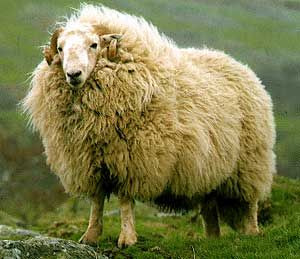
Ain't no rain getting in THAT.
Anyway, a few strategically placed shelterbelts and hedgerows later and:
The sheep can now safely stay out all year round, excepting storms
The sheep are actually healthier and have higher welfare standards
Floods have reduced thanks to higher infiltration rates
Soil erosion is reduced so the fields and river are healthier
The farmers have saved money
The farmers are now making extra money, because they started a tree nursery and sell trees as a side project
You can read multiple publications on it here
So yes! Silvipasture is actually a huge tool for the future that we need to be embracing, as is agroforestry for arable farming, and the frustrating/hopeful part of it is, these are tools we used to use. This isn't new knowledge - it's forgotten knowledge that we need to reclaim. But even aside from the immediate benefits, it also has massive implications for resilience in a world with a warming climate, and we need to do it faster.
591 notes
·
View notes
Text
0 notes
Text
Excerpt from this story from EcoWatch:
Fulfilling current land restoration pledges in 115 countries would require only a small amount of the global annual GDP, a recent analysis has found. Successful implementation would require about 0.04% to 0.27% of global annual GDP, totaling about $311 billion to $2.1 trillion.
The researchers analyzed costs of 243 land restoration projects happening globally and found that the median cost ranged from $185 per hectare to $3,012 per hectare, with an overall median cost of $1,691 per hectare. Lower-cost opportunities include forest management for $185 per hectare, passive regeneration ($513 per hectare), grazing management ($631 per hectare) and assisted natural regeneration ($804 per hectare).
“Passive regeneration is basically just fencing off an area and leaving it alone,” Dewy Verhoeven, lead author of the study and Ph.D. candidate at Wageningen University & Research, told Mongabay News. “Those costs are very low, maybe you have to install a fence and that’s it. But the opportunity costs are very large because you cannot use the land anymore.”
Projects with the highest median costs include agroforestry ($2,390 per hectare), cross-slope barriers ($2,562 per hectare), irrigation ($2,886 per hectare) and silvopasture ($3,012 per hectare), which integrates trees and pasture for grazing livestock on the same land.
In total, land degradation projects would add up to about 0.38% to 2.65% of global GDP for one year; however, the authors noted that spreading the cost out over a decade would lower the annual cost to just 0.04% to 0.27% of global GDP. The authors published these findings in the journal Land Degradation & Development.
While the total percentage is small, an even distribution of costs or distributing costs by project location would place a higher burden on lower income countries. The report authors found that most projects are concentrated in sub-Saharan Africa as well as South and Southeast Asia, with sub-Saharan Africa accounting for almost half of all global land restoration pledges.
64 notes
·
View notes
Text
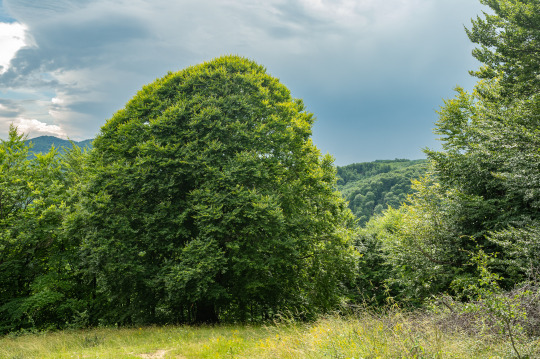
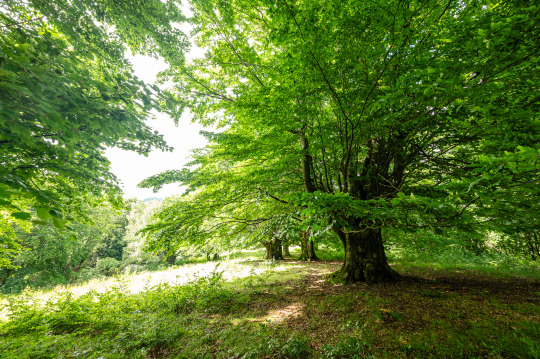


Silvopasture with beech (Fagus sylvatica)
Făgăraș Mountains, Wallachia, Romania
#original photography#photographers on tumblr#landscape photography#nature photography#agriculture#forest#trees#romania#carpathia#summer#hiking
173 notes
·
View notes
Link
Silvopasture is the ancient practice of raising animals, trees and pasture (grasses) on the same piece of land, a form of agriculture that is common in forested parts of the world. There are many forms of agroforestry – farming systems that incorporate trees – but silvopasture is unique among these practices in that trees are integrated with animals. The physical proximity of plants and livestock doesn’t alone make up silvopasture. Rather, the practice and its benefits hinge on careful management by people, who intentionally link up the inputs and outputs of plant and animal systems such that the whole is greater than the sum of its parts. For example, trees provide shade for livestock, and fallen or low-hanging fruits can provide food for the animals too. Meanwhile, animal manure fertilises the trees, and also the animals’ browsing activity can sometimes benefit tree growth, acting as a form of pruning.
Researchers have documented numerous environmental benefits of silvopasture, including increased biological diversity, improved water quality, reduced soil erosion, improved soil water-holding capacity, and enhanced pest management. But none of these benefits have garnered as much attention as silvopasture’s enticing potential to sequester carbon. Soil carbon is primarily built up through carbon-rich substances released by plant roots, which explains why farming systems that include trees can be a climate win: unlike corn, soybeans or lettuce, trees put down roots for decades and centuries at a time, continuously pulling carbon from the atmosphere into the soil. But grazing also plays a role in recycling key nutrients such as carbon and nitrogen, which create climate chaos when released to the atmosphere in excess, but support plant and animal growth when properly integrated into living systems. A recent paper synthesising research on agricultural carbon sequestration found that silvopasture sequestered more carbon than other regenerative agriculture practices.
Equally important in a world already facing the impacts of climate change, silvopasture can help farmers improve resilience to drought, flooding and extreme temperatures. As trees and animals combine to build up soil carbon and improve soil health, one of the happy consequences is better infiltration, meaning soils can better absorb excess rain, which in turn can be handy in case of a prolonged spell of hot, dry weather. Adding trees to a typical pasture can supercharge infiltration quickly: a 2019 study found that soil infiltration rates in silvopasture systems were more than 60 times higher than those in nearby pastures just two years after trees were added to the system. Meanwhile, trees provide critical shade to livestock, a well-known method for increasing overall animal wellbeing and weight gain. Trees can also offer supplemental nutrition when there’s not much to graze over a long summer. Grazing animals, in turn, can lower fire risks by reducing fuel loads.
Silvopasture has been practised for millennia around the globe, particularly in tropical, subtropical and arid areas where the spectre of a devastating drought is never far from farmers’ minds. A popular example is the dehesa (‘grassland’) system of southern Spain, responsible for jamón ibérico (Iberian ham). Pigs graze on grasses and acorns in these ancient tree-studded meadows, and the oaks yield cork and firewood. (Similar landscapes extend into southern Portugal, where they are referred to as the montado.)
Other examples of dryland silvopasture systems include the Espinal of Central Chile and the Galajars across Iran. Across the Pacific Islands, agroforests as diverse as the island nations and cultures themselves have been fine-tuned over millennia to produce an abundance of food on small landmasses. Countless traditional smallholder systems shaped ancient agricultural practices and persist today with little academic documentation or designation. ‘Silvopasture is sometimes just called “farming”,’ says Steve Gabriel, an agroforestry specialist at Cornell University in New York, ‘whether it’s because in dryland climates animals demand shelter from the hot weather to survive, or because of cultural custom.’
311 notes
·
View notes
Text
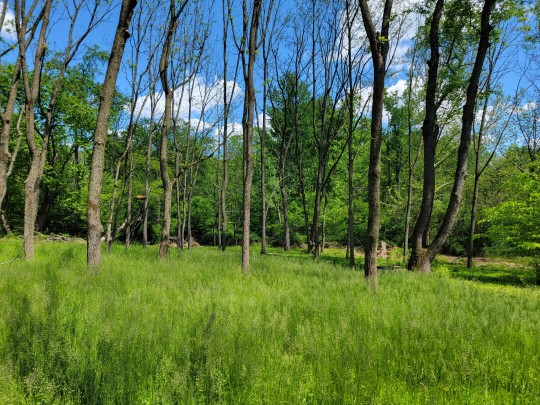
Forest of Dying Ash - May 6th 2023
#more ash that succumb to the borer#nature#forest#Delaware#mt cuba#photographers on tumblr#original phography#spring#looks like silvopasture but its not just an experimental plot
8 notes
·
View notes
Text
For folks in the Midwest interested in this style of agriculture you should look at the Savanna Institute. They promote, educate, and provide funds for integrating trees and permaculture more broadly onto the landscape. I'd also recommend The Practical Farmers of Iowa who focus on farmer-led education more broadly, but have growing resources on permaculture, silvopasture, and funding for improved grazing projects and habitat restoration.

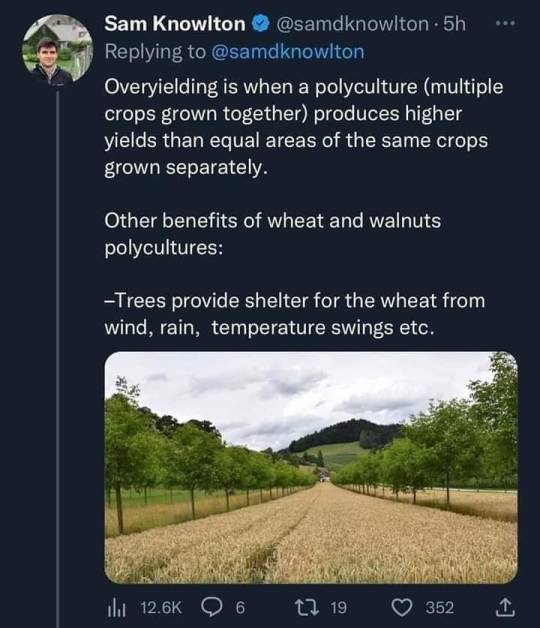
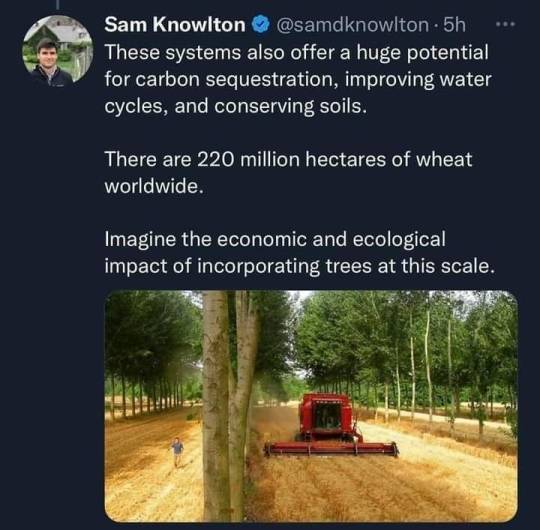

35K notes
·
View notes